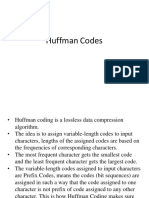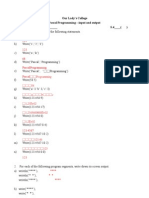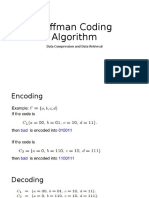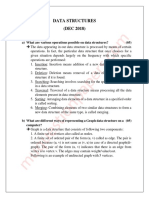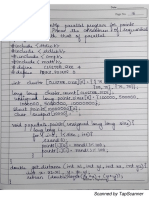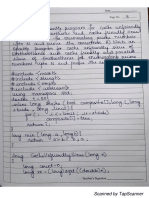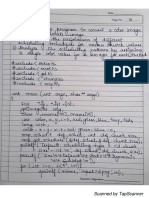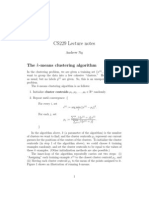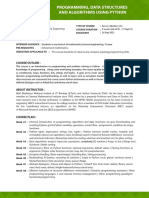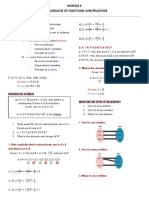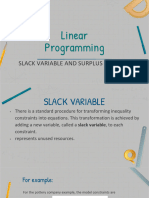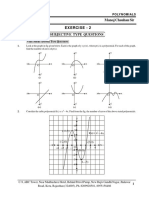0% found this document useful (0 votes)
106 views36 pagesNptel Week6 Module5 Greedy Huffman Code
The document discusses Huffman coding, an optimal prefix coding technique for lossless data compression. It begins by introducing the concept of variable-length encoding and prefix codes. It then describes how to construct an optimal prefix code by viewing the encoding as a binary tree and proving properties about the structure of the optimal tree. The document concludes by outlining Huffman's algorithm, which uses these properties to recursively combine symbols into a full binary tree that represents the optimal prefix code.
Uploaded by
VaibhavCopyright
© © All Rights Reserved
We take content rights seriously. If you suspect this is your content, claim it here.
Available Formats
Download as PDF, TXT or read online on Scribd
0% found this document useful (0 votes)
106 views36 pagesNptel Week6 Module5 Greedy Huffman Code
The document discusses Huffman coding, an optimal prefix coding technique for lossless data compression. It begins by introducing the concept of variable-length encoding and prefix codes. It then describes how to construct an optimal prefix code by viewing the encoding as a binary tree and proving properties about the structure of the optimal tree. The document concludes by outlining Huffman's algorithm, which uses these properties to recursively combine symbols into a full binary tree that represents the optimal prefix code.
Uploaded by
VaibhavCopyright
© © All Rights Reserved
We take content rights seriously. If you suspect this is your content, claim it here.
Available Formats
Download as PDF, TXT or read online on Scribd
/ 36

















